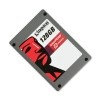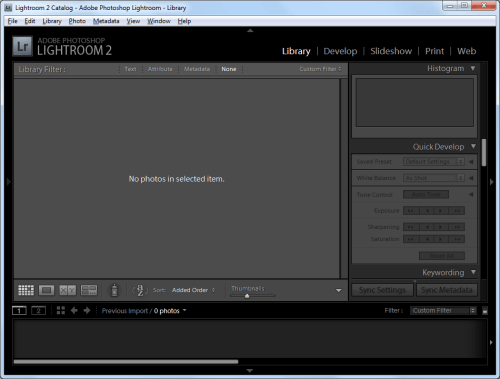- Qualcomm Launches Snapdragon 4 Gen 2 Mobile Platform
- AMD Launches Ryzen PRO 7000 Series Mobile & Desktop Platform
- Intel Launches Sleek Single-Slot Arc Pro A60 Workstation Graphics Card
- NVIDIA Announces Latest Ada Lovelace Additions: GeForce RTX 4060 Ti & RTX 4060
- Maxon Redshift With AMD Radeon GPU Rendering Support Now Available
Kingston SSDNow V Series SNV425 128GB

Like so many other memory vendors on the market, Kingston offers a wide array of solid-state disks for your perusal. For the low-end segment, it has the SSDNow V series, which at current time offer the best GB/$ on the market. We’re taking a look at the latest release here, combining a recent JMicron controller with Toshiba NAND.
Page 7 – Real-World: File Transfers, Adobe Lightroom
File Transfers
For this test we took a 7.16GB Dual-layer DVD image and timed how long was required to transfer it to a different 10GB partition created on the same drive. Keep in mind with a hard disk, this requires the actuator arm to seek back and forth between the source and destination sectors of the disk platter, while any SSD can instantly read and write to multiple flash chips at once. Still, this is not a test of the raw write speeds of a SSD as the SSD controller cannot read & write to the same parts of the NAND flash simultaneously.

The JMF618 controller is well suited for large sequential write operations and demonstrates that here. Still, the same controller with Western Digital’s firmware is able offer even more incredible performance, showing that JMicron’s default firmware is clearly not reaching the potential of this controller! The Intel G1’s 70-80MB/s write speed limit does it no favors here.
Adobe Lightroom 2.5
For this test we utilize 500 large RAW files, and import them into Lightroom. We time how long it takes the program to import the files, cache them, and build the image library.

Somewhat interesting is that the results are split into two main groups with the Summit only able to tie the hard drive, while the other SSDs clump together around the 3 minute mark. It appears the Lightroom test is not demanding enough, and another system component (likely the CPU) has become the bottleneck here rather than the storage. Remember, Lightroom only utilizes two cores when loading and creating its image library, so it is not fully utilizing our quad-core CPU.
This should go to show that not all workloads are bottlenecked by storage, and that to get the most out of a fast SSD it will require an equally matched processor and system as to avoid any system (or in this case software) bottlenecks. For the Kingston drive we see a particularly good showing, however.
Support our efforts! With ad revenue at an all-time low for written websites, we're relying more than ever on reader support to help us continue putting so much effort into this type of content. You can support us by becoming a Patron, or by using our Amazon shopping affiliate links listed through our articles. Thanks for your support!





